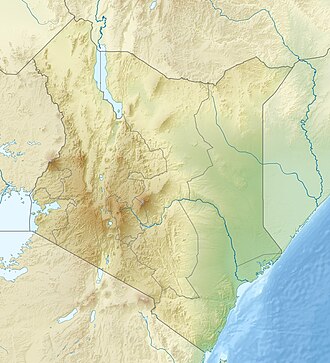| Mount Longonot | |
|---|---|
 | |
| Highest point | |
| Elevation | 2,776 m (9,108 ft) [1] |
| Listing | Volcanoes in Kenya |
| Coordinates | 0°54′55″S36°27′25″E / 0.91528°S 36.45694°E |
| Naming | |
| Native name | Oloonong'ot (Masai) |
| Geography | |
| Geology | |
| Formed by | Volcanism along the Gregory Rift |
| Mountain type | Stratovolcano |
| Last eruption | 1863 ± 5 years [1] |
| Climbing | |
| Easiest route | Scramble |
Mount Longonot is a stratovolcano located southeast of Lake Naivasha in the Great Rift Valley of Kenya, Africa. It is thought to have last erupted in the 1860s. [1] Its name is derived from the Maasai word Olongongot, meaning "mountains of many spurs" or "steep ridges".
Contents
Mount Longonot is protected by the Kenya Wildlife Service as part of Mount Longonot National Park. A 3.1 km trail runs from the park entrance up to the crater rim, and continues in a 7.2 km loop encircling the crater. The whole tour (gate-around the rim-gate) of 13.5 km takes about 4–5 hours allowing for necessary rest breaks - parts of the trail are heavily eroded and very steep. The gate elevation is around 2150 m and the peak at 2776 m but following the jagged rim involves substantially more than the 630 m vertical difference.
Mount Longonot is 60 kilometres northwest of Nairobi and may be reached from there by a tarmac road. A nearby town is also named Longonot. The Longonot satellite earth station is located south of the mountain.


